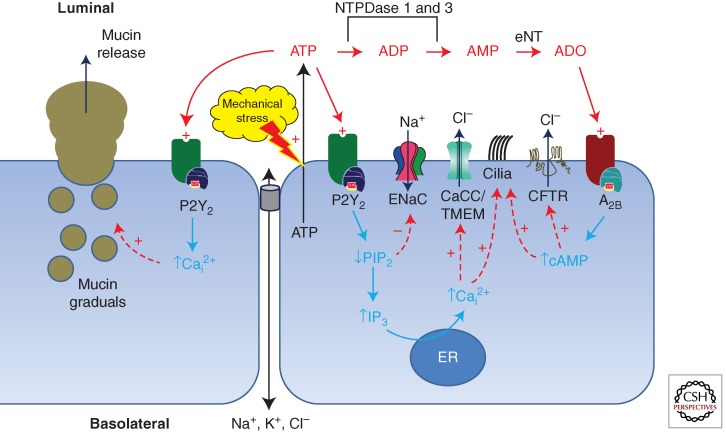Figure 1.
Model of purinergic signaling in airway epithelia. Mechanical stimulation of the epithelial surface by mechanical stress, irritants, or pathogens induces ATP release and elevates ASL (ATP). ATP is an agonist to a series of purinoceptors, including the G-protein-coupled P2Y2 receptor located on the luminal surface of the airway lumen. Upon P2Y2 receptor activation, the rate of PIP2 hydrolysis increases, resulting in an increase in IP3 and release of Ca2+ from stores. Increased levels of intracellular Ca2+ are responsible for activating CaCC (TMEM16a), resulting in a stimulation in Cl− secretion. Additionally, the reduction in PIP2 also results in a decrease in ENaC-mediated sodium absorption. The action of a series of ectonucleotidases converts the extracellular ATP to ADP, AMP, and eventually adenosine (ADO). Adenosine is a potent agonist of adenosine receptors, such as the A2b receptor, expressed on the airway surface. Activation of these receptors induces G-protein-coupled adenylate cyclase, followed by cAMP-dependent activation of protein kinase A. The result is stimulation of CFTR-mediated Cl− secretion. In addition to modulation of ion channel activity, stimulation of ATP release is a well-known agonist for stimulating mucin release (via P2Y2 receptor activation) and cilia beat frequency (via both P2Y2 and A2b). Together, the action of mechanical stress is the stimulation of fluid secretion and acceleration of mucus transport rates.

